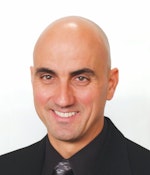Uninterruptible power supplies have emerged as critical components for maintaining productivity and operational efficiency in the industrial setting. As manufacturing lines become increasingly automated and reliant on sophisticated machinery, the need for reliable power sources has never been more vital.
An uninterruptible power supply (UPS) is a device that provides backup power to critical systems in the event of a power failure. Unlike a generator, which can take time to start, a UPS provides instantaneous power, ensuring that equipment remains operational without interruption. This capability is particularly crucial in manufacturing settings, where even brief power outages can lead to significant disruptions, costly downtime and potential damage to equipment and products.
Get your subscription to Control Design’s daily newsletter.
Use cases for UPS
- Protection against power interruptions: Manufacturing lines are often subject to sudden power outages caused by weather events, equipment failures or grid issues. An uninterruptible power supply ensures that critical machines continue to operate, thus preventing delays and losses. This is especially important for automated assembly lines, CNC machines and other equipment that require continuous power for seamless operation.
- Power quality management: Voltage fluctuations, surges and sags can adversely affect sensitive machinery and equipment. UPS systems often come equipped with power-conditioning features that filter out noise and stabilize voltage levels, providing clean power to machinery. This helps to minimize wear and tear, prolonging the lifespan of equipment and reducing maintenance costs.
- Data protection: In modern manufacturing environments, data is integral to operations. Manufacturing execution systems (MES), enterprise resource planning (ERP) software and various Internet-of-Things (IoT) devices rely on consistent power to function correctly. An uninterruptible power supply can protect these systems from data loss and corruption during outages, ensuring that information isn’t compromised.
- Operational continuity: Many manufacturing processes involve complex workflows that can be disrupted by power losses. An uninterruptible power supply supports operational continuity by allowing processes to complete safely and properly, thus avoiding costly product defects and rework.
- Safety assurance: Certain manufacturing processes involve hazardous materials or conditions that can pose safety risks during power interruptions. UPS systems can help maintain these safety systems, as well as systems such as emergency lighting and ventilation, ensuring that the factory remains safe for workers during power failures.
An uninterruptible-power-supply system is typically made up of two main components: the UPS itself and the battery bank for supplying power to the load.
The uninterruptible power supply
Uninterruptible power supplies for manufacturing lines come in various sizes, typically measured in Volt-Amperes (VA) or kiloVolt-Amperes (kVA). Common UPS sizes range from small units, around 500 VA, to larger industrial models, 10 kVA and above. Some systems can even exceed 100 kVA for extensive operations.
The size needed depends on the specific requirements of the manufacturing line, such as the number of devices to be powered and their power consumption.
In many cases, UPS systems are designed to support only critical components like computers, control systems and sensitive equipment rather than powering the entire manufacturing line. However, larger industrial-grade UPS systems can be configured to provide backup power to more extensive setups, including machinery and entire production lines, depending on their power ratings and the load requirements.
It’s crucial to perform, or have your vendor perform, a detailed assessment to determine the appropriate size and configuration based on the specific needs of the manufacturing process.
The battery bank
The maximum duration the UPS will power the load at the specified voltage and current is determined by the size/capacity of the battery bank, which is measured in Amp-hours (Ah). The capacity required is determined by multiplying the load current by the time the system needs to be powered. Additionally, a reserve amount needs to be factored in, which takes into account the usable capacity that batteries can be safely discharged down to from full, which is typically between 75% and 80%.
That time duration, once again depending on how long the loads need to be powered, can range from only a few seconds to many minutes. If the entire line will not need to be powered, the UPS may be needed only for a few seconds for the controller to gather the last running settings and any required product traceability data to be saved locally. If the entire line will continue to run, the load will obviously be greater, but the capacity may only need to be long enough to support production until the emergency generators have a chance to start and are up and running at rated voltage and frequency.
Uninterruptible power supplies play a crucial role in modern manufacturing, ensuring that operations run smoothly and efficiently despite the inevitable challenges posed by power interruptions. By protecting against downtime, improving power quality and enhancing safety, UPS systems provide significant benefits to factories and their business units. With continued advancements in UPS technology, manufacturers can expect even greater reliability and efficiency, driving productivity and competitiveness in an increasingly demanding market. As manufacturing lines evolve, the importance of robust power solutions will only continue to grow, solidifying the UPS as an indispensable asset in the industrial landscape.





